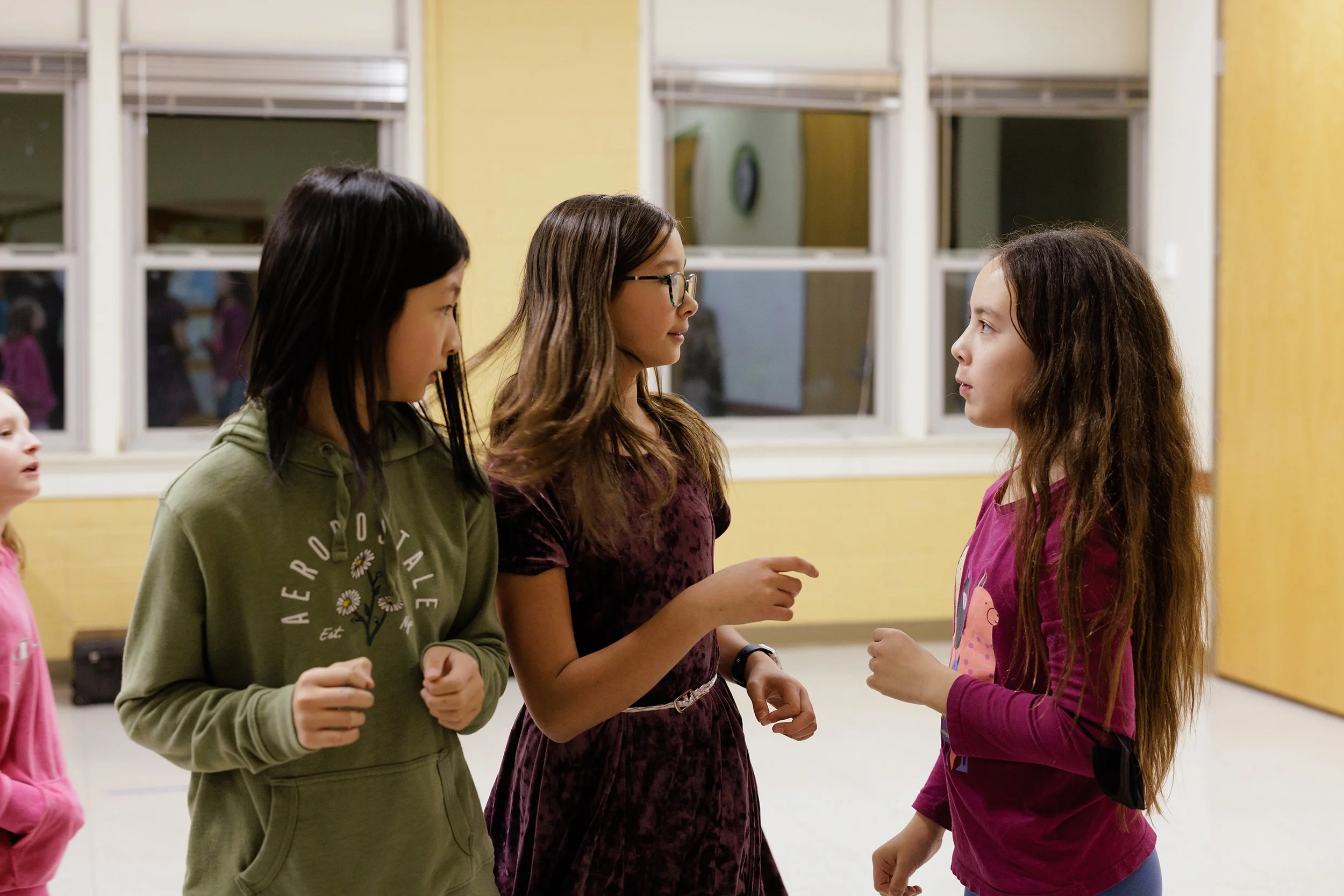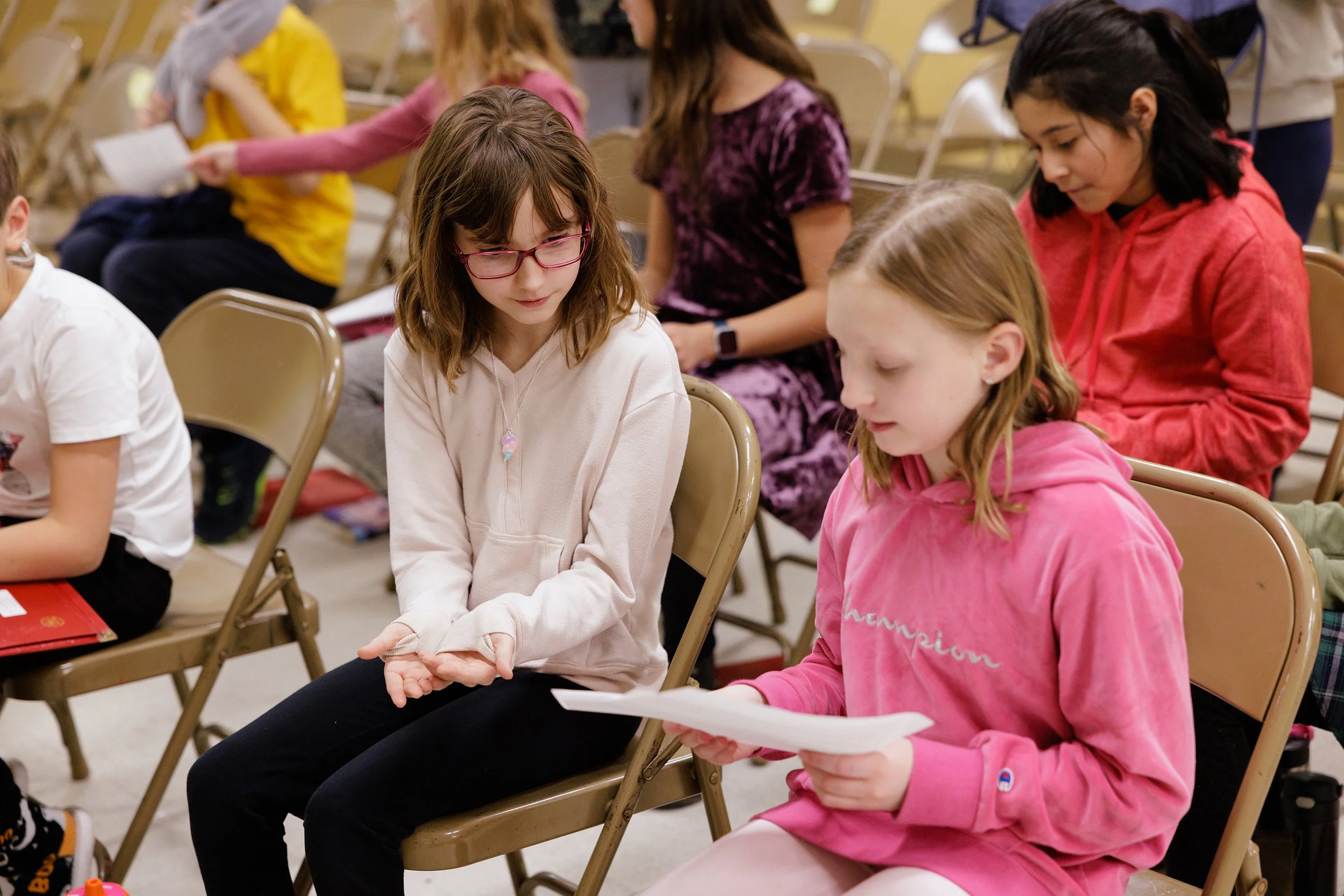Concert Chorus Curriculum
In concert chorus, singers continue their vocal development, learn to read music, and focus on imbuing their singing with musicality and expressivity.
Concert Choristers Learn…
To apply solfège syllables to a new piece of music
Sight singing in a variety of major keys, using moveable “do” and “la”-based minor
Major key signatures
Time signatures and more complex rhythmic patterns
Musical concepts related to different musical forms and style periods
To sing in unison, two parts, three parts, and a cappella
Professional deportment and focus, musicality, and expressivity in performance
Repertoire
Concert Chorus music includes singing in two and three parts. Choristers are also introduced to singing in a different language. Songs are drawn from a variety of time periods and styles and expose singers to different historical events and cultures. Singers also learn basic choreography—both while singing and for exiting/entering stage.
Recent songs include:
Birdsong, Paul Read
Die Schwestern, Johannes Brahms
Mrs. Galo, South African Xhosa song
Evaluations
At the end of each semester, each chorister will participate in a vocal and written evaluation. The purpose of these evaluations is twofold:
to inform artistic staff of what choristers have learned
to give choristers personalized feedback from artistic staff on their progress in a number of areas.
Evaluations are meant to be informative and are not punitive. For older students (fourth grade plus), evaluations do inform conductors’ decisions regarding potential early promotion of some singers.
Performance Opportunities
Anima Winter Concert (with Treble and Touring Choruses)
Anima Spring Concert (with Treble and Touring Choruses)
Special projects/collaborations with professional arts organizations (these opportunities vary by year; recent collaborations include performances with Music of the Baroque, the Grant Park Music Festival, and Joffrey Ballet)
Concert Chorus in Action








